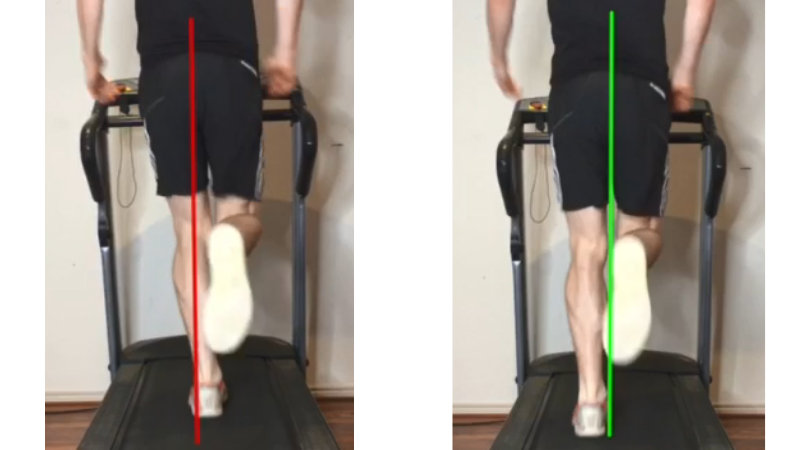The running technique hack to reduce injury risk: Step width

What is a running step width?
Your running step width is exactly how it sounds, it is the measurement between the left foot and right foot in between steps. So, imagine a runner on a treadmill. Now, imagine a bright white line painted down the middle of the treadmill belt. Because everyone has a different running technique, the relationship between the painted line and foot strike will be completely different. Some runners will land their foot completely on the painted line and this would mark a ‘narrow’ step width. But there are even runners who cross further and even make contact on the other side of this line. This is know as a ‘crossover’ pattern. Regarding what style is ‘correct’ is open for debate but runners are encouraged to contact their foot slightly outside the painted line.

Influence on injury
There have been studies looking at step width in relation to running injuries. And research articles like Brindel et al, reported that step width significantly influenced lower leg forces during running. Continuing on this same article, they found if a runner were to change their step width from narrow to wide there was:
- Decreased force produced at the hip
- Reduced ground reaction forces surrounding the knee
- Less foot pronation & leg internal rotation
Following on from this, Meardon and colleagues reported that:
“Wider step widths were generally associated with reduced loading of the tibia and may benefit runners at risk of or experiencing stress injury at the tibia, especially if they present with a crossover running style”.

How to change running technique:
A wider step width can be adopted on an individual basis if clinically justified. For example, females may benefit if they are susceptible to ITB friction syndrome or runner’s knee. With that said, any change in width should be minute and subtle. For instance, running cues like ‘avoid running your knees together’ can be helpful at creating this subtle change. Other methods could be simple. Just try and contact the ground with feet slightly further apart.

Chris Napier: Science of Running
“Some anatomical ‘abnormalities’ such as flat feet or knock knees, are considered risk factors for running injuries, but this belief has not been backed up by research. Your body becomes accustomed to its own anatomy and will adapt to your training as long as you build up your training load gradually”.
Relevant Blogs:
RUNNING CADENCE: How the take full advantage
Relevant Podcast Episodes:
Running Technique insight Chris Bramah
Addressing common running misconceptions 2: Running Form
